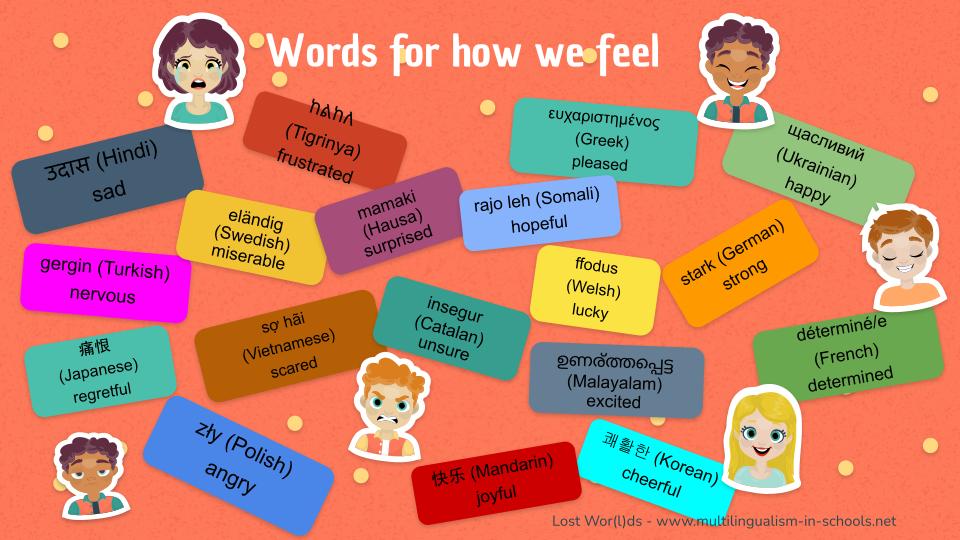It’s Empathy Day on 6th June – a great opportunity to use multilingualism in the classroom as a way to encourage interest in, and engagement with, each others’ languages. Here are four simple ideas:
- Create a multilingual “How are you feeling” board. This activity is easily adaptable to different age ranges. Ranging from a simple gathering of words for “happy” and “sad” in as many classroom languages as possible, to a more nuanced display board that might even capture words for emotions that might not easily translate to English. Download the .ppt slide as a starter activity, see whether children recognise any of the words, and then create your own.
- Learn how to be kind in different languages. Consider things we might say to others to make them feel good. What things to children like to hear to make them feel good about themselves? Can they say these things in languages they might speak outside of school? Try, as a class, to learn how to pay simple compliments to somebody in a variety of languages, and/or make a “Things that are nice to hear, and nice to say” display board.
- Play an emotions game – this one works best if the class has already created a “How are you feeling” board, and if there is some variety in the vocabulary. Mark the four corners of the classroom with four emojis – happy, sad, confused, angry. A child gets to pick an emotion from the board, and navigates themselves to wherever in the room (in relation to the four corners) they feel the emotion “lives”, with other children guessing which emotion they picked. This can open up discussions about how we each experience different emotions. Explain that nobody stands in the “wrong” place and explore how the different languages might even lead to different interpretations of emotions.
- Write a “zoning in” poem that explores emotions in relation to cognate words in English, getting closer and closer – see an example below. Starting from the title of the poem, children use words they know to “feel their way” towards the best translation, using similes and/or metaphors to lend strength to their interpretations. This enhances language awareness and translation skills. Some children may use more translanguaging in their poem, continually comparing different words across multiple language, before arriving at the closest fit.

